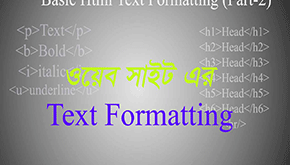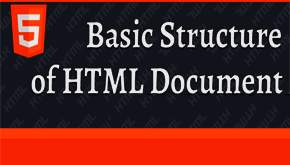HTML, Beginner Tips taking the first steps into the exciting world of web development! HTML, the foundation of every website, might seem simple at first glance. But don’t be fooled! Beyond the basics lie powerful tricks that can elevate your code, improve user experience, and make you a more efficient developer. Here are 10 essential HTML tricks every beginner should know:
- Mastering the Magic of Attributes:
HTML tags are like empty boxes, but attributes breathe life into them. Don’t underestimate their power!
For example, the alt attribute for the <img> tag:
<img src="image.jpg" alt="A beautiful scenery">
The href attribute on an <a> tag:
<a href="https://www.example.com">Visit Example</a>
Using class and id attributes for styling:
<div class="container" id="main-content"> <!-- content here --> </div>
- Nesting Power: Building Complex Layouts with Ease:
Imagine constructing a house. You wouldn’t build every room on the ground floor, right? Nesting in HTML allows you to create complex layouts by placing tags within other tags.
Example of nesting:
<div class="card"> <h2>Card Title</h2> <img src="card-image.jpg" alt="Card image"> <p>This is a description of the card.</p> </div>
- Comments are Code Companions:
While comments aren’t displayed on the website, they are your secret weapon for maintaining clean and understandable code.
Example of comments:
<!-- This is the main navigation menu --> <nav> <ul> <li><a href="#home">Home</a></li> <li><a href="#about">About</a></li> <li><a href="#contact">Contact</a></li> </ul> </nav>
- Semantic Markup: Speaking Search Engine Language:
Search engines love websites that make sense! Semantic markup involves using the right tags for your content.
Example of semantic tags:
<article> <header> <h1>Main Heading</h1> <p>Subheading or author info</p> </header> <section> <h2>Section Heading</h2> <p>Content for the section.</p> </section> <footer> <p>Footer content here.</p> </footer> </article>
- Readability Rules: Keeping Users Engaged:
Break down long paragraphs into smaller chunks using <p> tags. Use heading tags strategically to create a clear hierarchy. Bullet points (<ul>) and numbered lists (<ol>) improve readability for items.
Example of structured content:
<h1>Main Heading</h1> <p>This is a short paragraph introducing the topic.</p> <h2>Subheading 1</h2> <p>Details about the first subtopic.</p> <ul> <li>First point</li> <li>Second point</li> <li>Third point</li> </ul> <h2>Subheading 2</h2> <p>Details about the second subtopic.</p> <ol> <li>First step</li> <li>Second step</li> <li>Third step</li> </ol>
- Embrace the Power of Classes and IDs:
Use the class attribute to apply the same styles (using CSS) to multiple elements. Need to target a specific element for unique styling? That’s where the id attribute shines.
Example of classes and IDs:
<div class="button primary">Primary Button</div> <div class="button secondary">Secondary Button</div> <div id="unique-element">Unique Element</div>
- The Inline Style Trick: Quick Fixes on the Fly:
While external stylesheets are ideal for managing styles across a website, there might be times when you need a quick fix.
Example of inline styles:
<p style="color: red; font-weight: bold;">This is a highlighted paragraph.</p>
- HTML Entities: Conquering Special Characters:
Certain characters like “<” and “>” have special meanings in HTML and can break your code. This is where HTML entities come in.
Example of HTML entities:
<p>Use < for the less than symbol and for the greater than symbol.</p>
- Browser Developer Tools: Your Debugging BFF:
Every developer makes mistakes, but with the right tools, fixing them becomes a breeze. Most browsers come with built-in developer tools that allow you to inspect your HTML code, identify errors, and make real-time changes.
Learn to use tools like Chrome DevTools:
<!– Right-click on an element and select “Inspect” to open DevTools –>
- Embrace the Learning Loop: Practice, Experiment, and Refine:
The best way to master HTML is through practice! Experiment with different code structures, explore new tags, and try implementing the tricks you learn.
Example of an experimental section:
<section> <h2>Experiment with HTML</h2> <p>Try adding different elements and styles here.</p> <img src="experiment.jpg" alt="Experiment image"> </section>
Remember, these are just the first steps on your HTML journey. As you delve deeper, you’ll discover even more advanced concepts and techniques. With continuous practice and exploration, you’ll become a proficient web developer in no time.
Feel free to dive into these tricks, and happy coding!
 Learncoading.com learn coading
Learncoading.com learn coading




